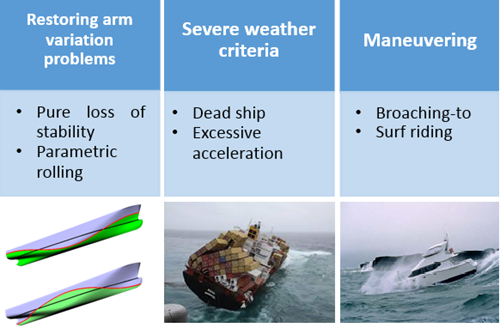Second generation intact stability assessment
For a ship to be considered seaworthy and safe it must be designed to remain stable and afloat in all conditions, whether intact or damaged. Mandatory criteria and recommended provisions regarding intact stability are set out in IMO’s 2008 Intact Stability (IS) Code under the SOLAS Convention and the 1988 Load Lines Protocol. Around 2000s, IMO started the work on stability of ships in waves called as second generation intact stability criteria. After substantial developmental work, at SDC7 the committee has finalized and approved the guidelines of the proposed stability criteria for assess the ship safety in waves. The finalized set of interim guidelines will now be considered by the Maritime Safety Committee (MSC 102) with a view to approval, so that they can be disseminated and tested in practice. These new criteria are organized in five stability failure scenarios: i) Parametric roll resonance ii) Pure loss of stability iii) Dead ship condition iv) Surf-riding/broaching v) Excessive acceleration. Expecting this outcome, IRS started the work on second generation intact stability and developed an in-house tool to assess all five stability failure mode vulnerability checks (Level-1 and Level-2).
In each failure scenario, three levels of vulnerability criteria assessment are to be performed.
-
Level-1: Simple and conservative criteria based on geometry of hull and speed entailing a larger “safety margin”.
-
Level-2: Less conservative criteria, based on simplified physics and involving probabilistic performance based assessment
-
Level-3: Direct stability assessment (DSA) using robust and comprehensive numerical simulations with the help of advanced computer codes or model tests. The outcome of DSA could results in an essential change in ship preliminary design or for the development of an Operational Guidance (OG)/Operational Limitation (OL).








